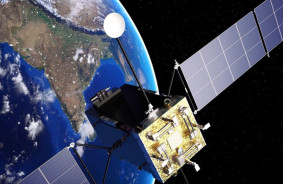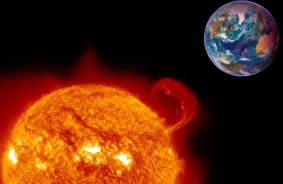Yesterday, Ukrainians had the chance to witness a rare astronomical event in the evening sky — the ATLAS comet (also known as C/2023 A3 or Tsuchinshan-ATLAS). This celestial object approached Earth at a minimum distance of about 70 million kilometers. Scientists call it the brightest comet seen in the last 13 years, making it possible to observe the comet with the naked eye.
Those who missed this spectacle need not be upset, as the ATLAS comet will continue to appear in the evening sky for approximately another two weeks. In the upcoming days, until October 15, visibility will be at its best. Let's discuss how to best observe this heavenly body.
The ATLAS comet is visible to the naked eye in the Northern Hemisphere, so this time, Ukrainians are fortunate. It is seen in the western part of the sky in the evening after sunset. The best time for observation is around 7 PM. The comet will fade from view within an hour, so it's advisable not to delay your observation if weather conditions permit. Observing the comet is most effective in areas with minimal light pollution — away from large cities. However, even in Kyiv, the comet can be clearly seen as long as clouds do not obstruct the view.
After its perihelion, the brightness of the comet is expected to gradually decrease to 3rd magnitude. By the end of October, it may become entirely indistinguishable to the naked eye, necessitating the use of binoculars or a telescope for further observations.
The C/2023 A3 comet was discovered in early 2023 at the Tsuchinshan Observatory and later with the ATLAS telescope in South Africa. This is how it got its name. Astronomers described the Tsuchinshan-ATLAS as a potential large comet, a term for particularly bright and noticeable objects observable from Earth. It approached the Sun on September 27, 2024, at a minimum distance of 58.5 million kilometers, at which point it could be observed in the Southern Hemisphere.
It is worth noting that the C/2023 A3 comet has come to the inner part of the Solar System and Earth for the first time in human history. However, this may also be its last visit. Scientists speculate that the comet could break apart into smaller bodies during this pass. It was thought that its volatile and icy composition might not withstand the intense heat of the Sun, although it has emerged from these trials relatively unscathed. Nonetheless, it could subsequently be ejected from the Solar System due to the gravitational influence of other bodies and its own weak connection to the Solar System.
Source: NASA














Comments (0)
There are no comments for now